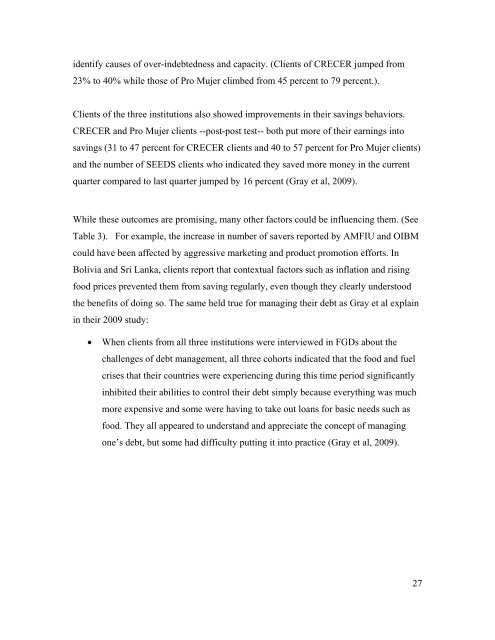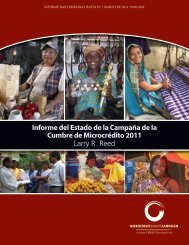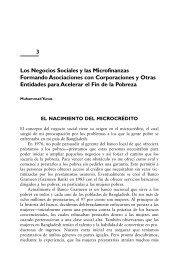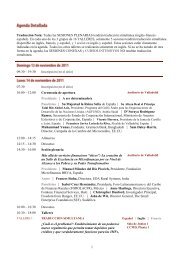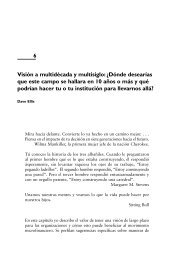Financial Literacy: A Step for Clients towards Financial Inclusion
Financial Literacy: A Step for Clients towards Financial Inclusion
Financial Literacy: A Step for Clients towards Financial Inclusion
You also want an ePaper? Increase the reach of your titles
YUMPU automatically turns print PDFs into web optimized ePapers that Google loves.
identify causes of over-indebtedness and capacity. (<strong>Clients</strong> of CRECER jumped from<br />
23% to 40% while those of Pro Mujer climbed from 45 percent to 79 percent.).<br />
<strong>Clients</strong> of the three institutions also showed improvements in their savings behaviors.<br />
CRECER and Pro Mujer clients --post-post test-- both put more of their earnings into<br />
savings (31 to 47 percent <strong>for</strong> CRECER clients and 40 to 57 percent <strong>for</strong> Pro Mujer clients)<br />
and the number of SEEDS clients who indicated they saved more money in the current<br />
quarter compared to last quarter jumped by 16 percent (Gray et al, 2009).<br />
While these outcomes are promising, many other factors could be influencing them. (See<br />
Table 3). For example, the increase in number of savers reported by AMFIU and OIBM<br />
could have been affected by aggressive marketing and product promotion ef<strong>for</strong>ts. In<br />
Bolivia and Sri Lanka, clients report that contextual factors such as inflation and rising<br />
food prices prevented them from saving regularly, even though they clearly understood<br />
the benefits of doing so. The same held true <strong>for</strong> managing their debt as Gray et al explain<br />
in their 2009 study:<br />
<br />
When clients from all three institutions were interviewed in FGDs about the<br />
challenges of debt management, all three cohorts indicated that the food and fuel<br />
crises that their countries were experiencing during this time period significantly<br />
inhibited their abilities to control their debt simply because everything was much<br />
more expensive and some were having to take out loans <strong>for</strong> basic needs such as<br />
food. They all appeared to understand and appreciate the concept of managing<br />
one’s debt, but some had difficulty putting it into practice (Gray et al, 2009).<br />
27


